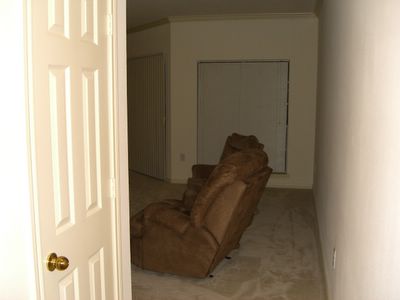Nathan's Photos
Saturday, October 29, 2005
Tuesday, October 25, 2005
Tuesday, October 11, 2005
Saturday, October 01, 2005
Thursday, September 01, 2005
Friday, August 12, 2005
Friday, August 05, 2005
High-Maintenance
California crab is 'fussy lover'
Californian fiddler crab females might be the choosiest mates in the world, Animal Behaviour journal reports.
Uca crenulata females will routinely check out 100 or more males before finally picking a mate.
Apparently, in the world of fiddler crabs, size does matter, both in terms of the male himself and his abode. "The size of a male's burrow affects the development time of his larvae," said Catherine deRivera of the University of California, US. "A burrow of just the right size allows larvae to hatch at the safest time, the peak outward night time flow of the bi-weekly tidal cycle."
Dr deRivera and her team conducted their observations in the Sweetwater River estuary in Chula Vista, south of San Diego, US.
She said previous studies of mate selection in other animals highlighted the fiddler crab's extreme pickiness.
The California fiddler crabs use a lateral wave that looks much like a human beckoning 'come here' Catherine deRivera, University of Californi
"Most animals sample just a few mates, presumably because search costs override the benefits of lengthy searches," Dr deRivera explained.
The average fiddler female, however, will inspect about 23 potential suitors and their bachelor pads before selecting a lucky winner. One especially hard to please female visited 106 male burrows, fully entering 15 of them, during her one hour and six minute search.
Male fiddler crabs attract suitors by standing in front of their burrows and waving their enlarged claws, in a motion reminiscent of a human "come hither".
"The California fiddler crabs use a lateral wave that looks much like a human beckoning 'come here'," Dr deRivera said. "It also seems to serve as a 'come hither' signal, as a male waves, standing at his burrow entrance, and interested females come over."
An approaching female will eye up the male and, if she likes what she sees, will partially or fully enter the burrow to size it up.
"The burrow openings, which are circular, are just big enough for the owners to get in," Dr deRivera said. "Crabs enter burrows sideways so have to fit in front to back and top to bottom."
When a female has found a suitor to her taste, either she or the male will plug up the opening of the burrow and the couple will mate and incubate their eggs. Later these hatch and release tiny larvae that are quickly flushed from the estuary by high night tides.
Dr deRivera also found that the largest females were the least picky, primarily because they could not fit into most of the burrows they visited. Therefore they were forced to choose one of the limited number of males with "super-size" burrows.











































